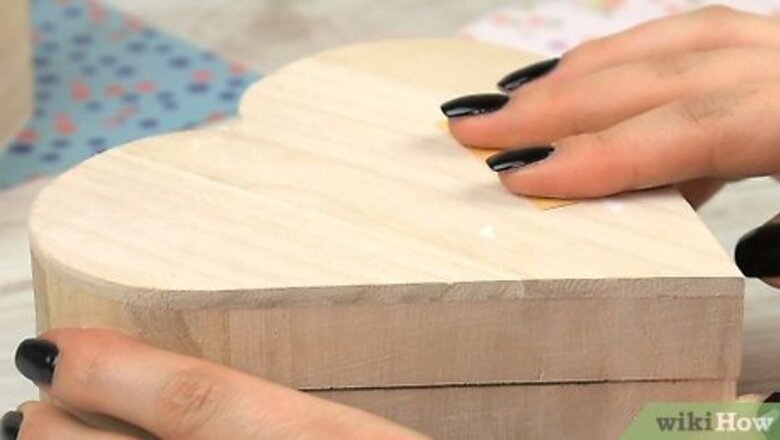
views
Using Mod Podge as an Adhesive

Sand any rough patches on the wood. If the piece of wood has any splinters or other rough patches, sand them down with medium-grit sandpaper. Then wipe the wood down with a tack cloth to remove any sawdust. If you don't have a tack cloth, a damp cloth or paper towel will work as well. If you're only gluing on one side of the wood, you only have to sand that side.
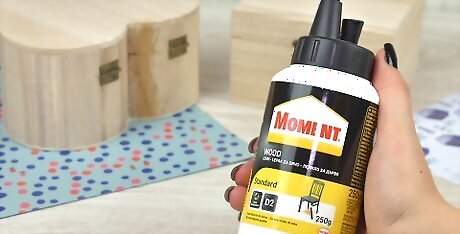
Choose between a gloss or matte mod podge formula. Mod podge is a thick glue, sealer, and finisher that's very popular for arts and crafts projects like this. To mod podge paper to wood, you have a choice between a gloss or matte formula. Both are effective, but the only difference is that a gloss finish will give a shine to your finished product. If you don't want that, choose a matte formula. Both mod podge types are available at crafts stores or online.
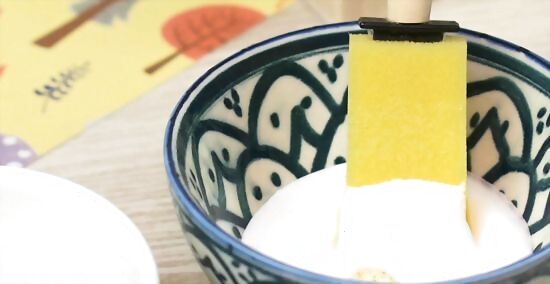
Wet a foam brush and dip it into the mod podge. Dip the brush into a cup of water. Dab it on a paper towel to soak up excess water, then dip it into the mod podge. Stir a bit to get a good amount of glue on the brush. A foam brush gives you the smoothest finish, but a regular paintbrush will work as well. If you don't mind seeing brushstrokes, then use a regular brush.
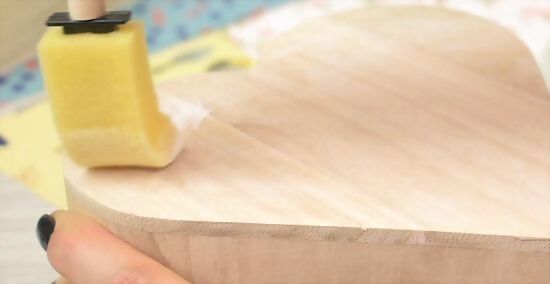
Paint a layer of mod podge on the side of the wood you're attaching the paper to. Use back and forth strokes to spread the mod podge around the wood. Add more if you need to. Cover the whole area that you're applying paint to. Make sure the mod podge looks like a translucent white on the wood. If it's clear, add more. If it looks completely white, spread it around a little thinner. It's okay if you get glue on spots that the paper won't cover. The mod podge dries clear. Mod podge dries quickly, so don't wait long before you press the paper down.

Press the paper down against the wood. After applying the mod podge, take the paper and line it up with the wood. Then press it down in the position you want it on the wood. From there, run your palm across the paper to press it against the wood and work out air bubbles. If you have thick paper and make a mistake, you can pull it back up carefully and refit it. Doing this more than once will probably rip the paper.

Roll the paper with a mod podge applicator. Mod podge makes an applicator that looks like a small roller. This flattens the paper down and works out any air and excess glue. Roll over the paper a few times until the surface is completely even. If any mod podge leaks out from the sides, wipe it up with a paper towel. These applicators are available from craft stores or online.
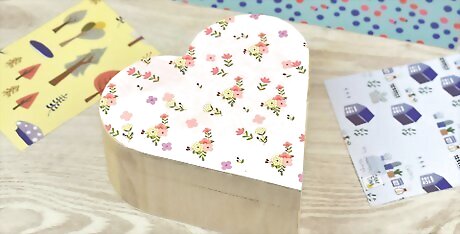
Let the mod podge dry for 15 minutes. Leave the project in a safe place where it won't get knocked over. After 15 minutes, you can move the project to a new area or apply a layer of finish. Leave the piece flat so the paper doesn't slip.
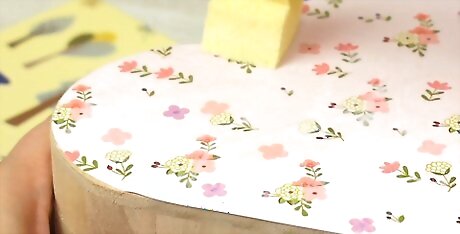
Apply 2 thin coats of mod podge over the paper if you want an extra shine. If you'd like, apply more mod podge over the paper for a shiny finish. Dip the brush back into the mod podge and paint a thin, clear layer on the paper. Wait 15 minutes and apply a second coat. Once the mod podge dries, the project is complete.
Bonding with Spray Adhesive
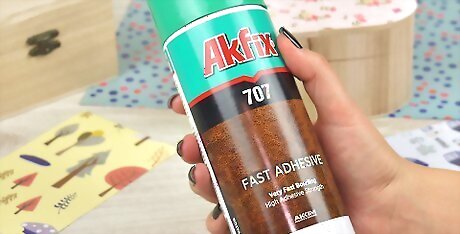
Get a can of artist's spray adhesive. This adhesive is a type of clear spray glue. It comes in a can that looks similar to spray paint. Spray adhesive is available from hardware or arts stores. There are other types of spray adhesives as well, but make sure you get the artist's type. Foam or photo sprays will ruin paper.
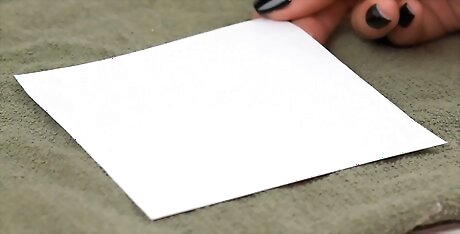
Lay the paper face down on a towel or sheet. This prevents the adhesive from making a mess when you spray the paper. Use an old towel that you don't mind getting messy. Make sure the sheet is clean before putting the paper down. Otherwise you could ruin the paper.
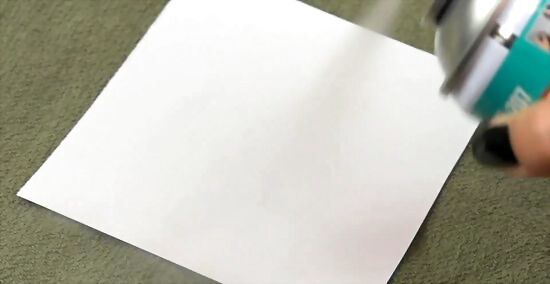
Spray a thin coat of adhesive onto the paper. Shake the can well and hold it 6 inches (15 cm) from the paper. Then spray in even lines across the whole surface of the paper. Keep the can moving so the adhesive doesn't pool. Passing over the paper once applies enough adhesive. If you see the adhesive pooling, you're spraying it on too thick. Try wiping a bit of it off with a paper towel so the paper doesn't wrinkle.
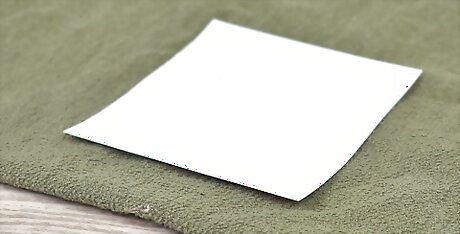
Let the paper sit for 1 minute. Pressing the paper down right away results in a weaker bond. Let the paper sit so the glue sets properly. This gives you a stronger hold. If you do plan on peeling the paper off at some point, then press it down right away.
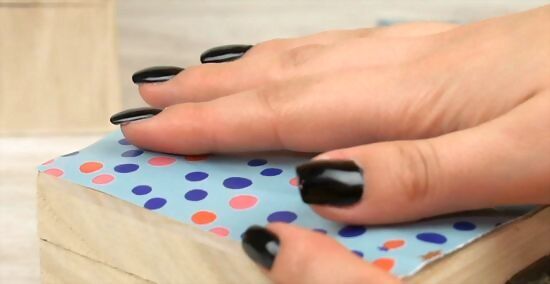
Press the paper against the wood. After a minute passes, pick up the paper by the corners and press it down onto the wood.Smooth the paper out by pressing down with your palm and running it over the paper. Work out any air bubbles by pushing them towards the side. Spray adhesive doesn't give you the strongest bond, so if you make a mistake, pull the paper up and put it back in the proper position.

Leave the paper for 1 hour to let the adhesive dry. Spray adhesive generally dries quickly, but allow an hour to make sure it's completely dry. Leave the wood flat so the paper doesn't slide off. Then after an hour, move the piece wherever you want it. If you change your mind and don't want to leave the paper on the wood, use mineral spirits to dissolve the adhesive.
Applying Tacky Glue
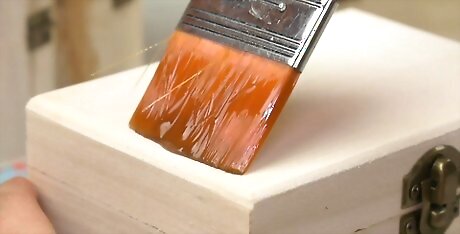
Seal the wood if you want a cleaner finish. Wood sealant smooths out the wood surface and prevents air bubbles from forming under the paper. Start by sanding the wood until the surface is smooth. Then paint it with a polyurethane wood sealant and let it dry. This will give you a cleaner finish when you glue the paper down. This step is optional, but it will give you better results.
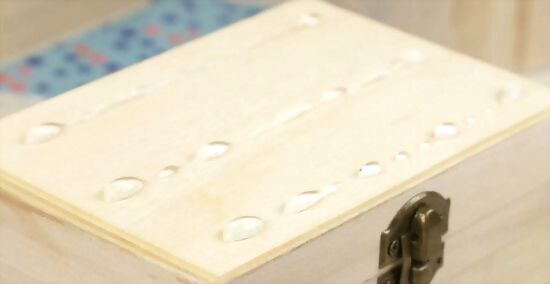
Pour a thick line of tacky glue onto the wood. Tacky glue is an extra thick type of glue that is perfect for adhering paper to wood. It's sometimes called PVA glue. This type is the best choice because other watery glues will make the paper bubble up. Take a container of glue and squeeze it onto the wood in lines. Don’t try to cover the whole wood surface yet, because you’ll spread the glue around next. Tacky glue is available online or at craft stores. It comes in clear and white varieties. Both dry clear, so either works for this project. Wood glue is a good alternative to tacky glue, but it may make the paper wrinkle more than tacky glue will. White glue that children use in school is similar to tacky glue, but it’s more watered down and could cause the paper to bubble up, so it's not a good choice. Other popular glues like hot glue or super glue are not good choices. They'll wrinkle the paper.
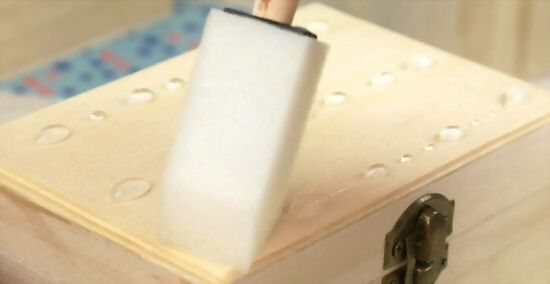
Spread the glue in an even layer with a foam brush. Once you’ve applied the glue, take a foam brush and spread it around. Cover the entire surface that you're attaching the paper to in an even layer of glue. Make sure you spread the glue all the way to the edge of the wood so the paper doesn’t start lifting. Add more glue as you need it. The glue should be a translucent white when it’s spread out. If it looks completely clear, the layer is too thin. Add some more glue. A regular paint brush won’t spread the glue as evenly, so only use a foam brush. This glue dries quickly, so don’t wait long before pressing the paper down.

Press the paper against one edge of the wood and smooth it out. Once the glue is applied, take the paper and line it up with the wood. Then press it down at an angle so only one edge of the paper and wood touch. From there, run your palm across the paper to press it against the wood. Apply pressure as you press to work out any air bubbles. Continue smoothing the paper out until the surface is flat and even. If you see any bubbles trapped under the paper, press down on them with your palm and work them towards the edges.

Let the glue dry for 1 hour. Once the paper is in place, give the glue time to dry. Tacky glue dries quickly, often within a few minutes, so 1 hour is enough for the glue to dry. Set the piece in a safe place and come back in 1 hour to complete the job. To ensure an even smoother finish, place something flat and heavy on top of the paper. Another piece of wood with some books on it would work. Make sure any wood you place on the paper is clean so you don’t ruin the piece you just made.
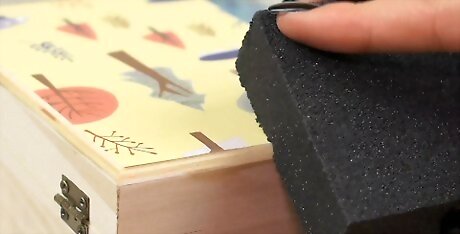
Sand the edges of the paper if it overshoots the wood. Sometimes the paper still doesn’t line up perfectly even though you traced the wood. In this case, use a fine-grit sanding block and sand down the paper edges. After a light sanding, the paper and wood will line up perfectly. If you don’t have a sanding block or sandpaper, a fine nail file will work as well.


















Comments
0 comment